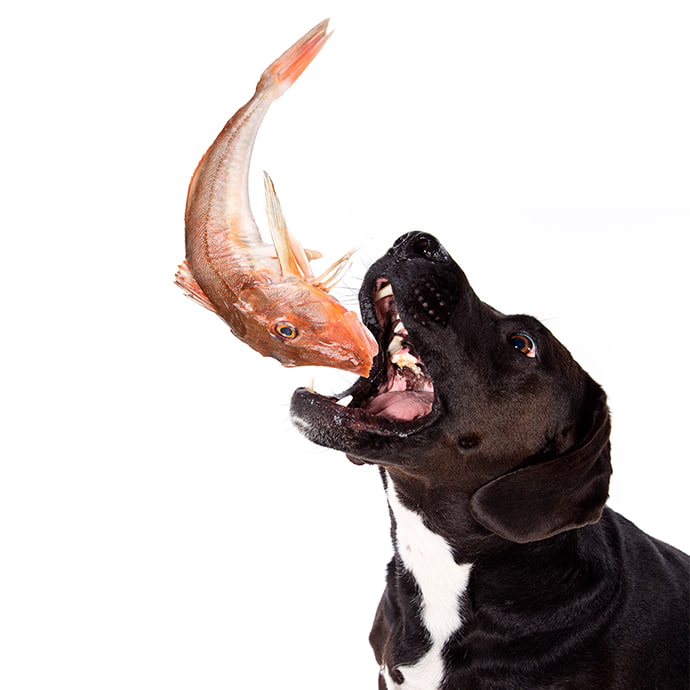If you're a dog owner, you might be wondering, "Can dogs eat fish?" The short answer is yes—dogs can eat fish, but there are important considerations to keep in mind when offering it to your furry friend. Fish is an excellent source of protein and omega-3 fatty acids, which can provide numerous health benefits for dogs. However, not all fish are safe for dogs, and there are certain precautions you should take when feeding fish to your pet.

In this article, we will explore the benefits, risks, and guidelines for feeding fish to dogs, helping you make informed decisions about your dog's diet.
Fish is packed with high-quality protein and essential fatty acids, which can support your dog's overall health. Here are some of the key benefits of fish for dogs:
Omega-3 Fatty Acids
Fish, especially fatty varieties like salmon, mackerel, and sardines, are rich in omega-3 fatty acids. These essential fats support healthy skin and coat, reduce inflammation, and promote joint health in dogs. Omega-3s are also beneficial for heart and brain health, making fish a valuable addition to your dog's diet.
Protein
Fish is a lean source of protein, providing all the essential amino acids dogs need for muscle development and overall growth. Protein also helps with tissue repair and maintaining a healthy immune system.
Vitamins and Minerals
Fish contains important vitamins and minerals such as vitamin D, B vitamins (B12, niacin), iodine, selenium, and phosphorus, which contribute to your dog's bone health, immune function, and metabolic processes.
Low in Calories
Compared to other animal proteins, fish is generally lower in calories, which makes it a great option for dogs who need to maintain a healthy weight.
While fish can be a healthy addition to your dog's diet, there are certain risks and precautions to be aware of:
Mercury Poisoning
Some fish species, particularly large predatory fish like tuna and swordfish, can contain high levels of mercury. Mercury toxicity can lead to serious health issues for dogs. It is advisable to limit or avoid feeding your dog large fish that are high in mercury. Instead, opt for smaller fish like sardines, anchovies, or salmon, which have lower mercury content.
Bones
Fish bones can pose a choking hazard or cause internal injuries if not properly removed. Always make sure to remove all bones before serving fish to your dog. Additionally, fish with bones, such as sardines or trout, should be avoided unless you're confident in your ability to remove all the bones.
Allergic Reactions
While rare, some dogs may have allergies or sensitivities to fish. Symptoms of an allergic reaction can include itching, swelling, gastrointestinal upset, or ear infections. If you're introducing fish into your dog's diet for the first time, start with a small portion and monitor for any adverse reactions.
Preparing Fish Safely
Fish should always be cooked before being fed to your dog. Raw fish may contain parasites or bacteria that could cause foodborne illnesses. Additionally, fish should be served plain, without added oils, spices, or seasoning that could upset your dog's digestive system or be toxic to them.
Risk of Overfeeding
Like any treat or supplement, fish should be offered in moderation. Too much fish can lead to an imbalance in your dog's diet, potentially causing issues with their digestion or nutrient intake.
Not all fish are safe for dogs to eat. It's essential to choose fish that are low in mercury and free from harmful additives. Some of the best fish options for dogs include:
Salmon: Rich in omega-3 fatty acids and highly nutritious. However, be sure it is properly cooked to avoid the risk of parasites.
Sardines: Small and packed with healthy fats, sardines are great for dogs. They're typically low in mercury and high in vitamins.
Mackerel: Another fatty fish that's good for your dog's skin and coat.
Whitefish: Low in fat and easy to digest, whitefish varieties like cod or haddock are safe for dogs.
Anchovies: Small and nutrient-dense, anchovies are safe and beneficial for your dog.
Avoid fish like tuna, swordfish, and tilefish, which are high in mercury. These fish can pose a risk to your dog's health if consumed in large amounts.
To ensure that fish is safe for your dog, follow these simple preparation tips:
Cook the Fish: Always cook fish before giving it to your dog to eliminate the risk of parasites or harmful bacteria.
Remove Bones: Make sure all fish bones are removed, as they can cause choking or internal damage.
Serve Plain: Fish should be served without added seasoning, oils, or spices, as these could be harmful to dogs.
Portion Control: Fish should only be a small portion of your dog’s overall diet. Moderation is key to preventing nutritional imbalances.
So, can dogs eat fish? Yes, in moderation, fish can be a healthy and nutritious part of your dog's diet. Rich in omega-3 fatty acids, protein, and vitamins, fish provides several benefits, including promoting healthy skin, coat, and joints. However, it’s essential to choose the right type of fish, avoid high-mercury varieties, and prepare it safely by removing bones and cooking it thoroughly.
As with any dietary change, consult your veterinarian before introducing new foods into your dog's diet, especially if your dog has a history of food allergies or health concerns. By following these guidelines, you can safely share the benefits of fish with your canine companion!
Sources:
"Omega-3 Fatty Acids and Their Role in Dogs' Health," Veterinary Journal, 2021.
"Toxicity in Fish and Seafood," National Institute of Environmental Health Sciences, 2022.
animal tags: dog
We created this article in conjunction with AI technology, then made sure it was fact-checked and edited by a Animals Top editor.